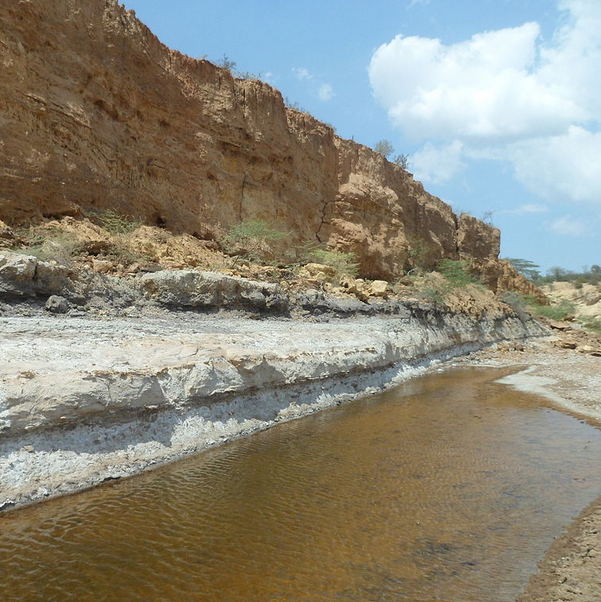Abstract
We present a review of the Miocene mylodont sloths described from the Urumaco Formation, Venezuela, and the Villavieja Formation, Colombia, and reexamine their phylogenetic relationships to the holotype of Pseudoprepotherium from the Río Yuca Formation, Venezuela. Based on our analysis we propose a number of taxonomic changes and consider Pseudoprepotherium confusum to be sufficiently different from the type of Pseudoprepotherium venezuelanum, that it merits a distinct genus, Magdalenabradys. We include in this new genus post-cranial material formerly assigned to Bolivatherium urumaquensis as a new species, Magdalenabradys kolossiaia. Comparison of Mirandabradys, first described from the late Miocene, Urumaco Formation of Venezuela, and its included species with the holotype of Pseudoprepotherium indicates they are the same genus, and Mirandabradys is considered a junior synonym. Three species of Pseudoprepotherium are recognized: the genotypic species, P. venezuelanum from the Río Yuca Formation, P. socorrensis from the Socorro Formation and P. urumaquensis, from the Urumaco Formation. We propose that based on the poor preservation and incompleteness of the type material that Mirandabradys zabasi is not a valid species and should be considered a nomen dubium.
References
Ameghino, F. (1891). Nuevos restos de mamíferos fósiles descubiertos por Carlos Ameghino en el Eoceno inferior de la Patagonia austral. – Especies nuevas, adiciones y correcciones. Revista Argentina de Historia Natural, 1, 289-328.
Bocquentin-Villanueva, J. (1984). Un nuevo representante de la subfamilia Prepotheriinae (Mammalia, Edentata) proveniente del Mioceno de Venezuela. Presented at the III Congresso Latinoamericano de Paleontología Memorias, Oaxtepec, Mexico.
Boscaini, A., Pujos, F. & Gaudin, T. J. (2019). A reappraisal of the phylogeny of Mylodontidae (Mammalia, Xenarthra) and the divergence of mylodontine and lestodontine sloths. Zoologica Scripta, 48(6), 691-710. doi: 10.1111/zsc.12376
Carlini, A. A., Scillato-Yané, G. J. & Sánchez, R. (2006a). New Mylodontoidea (Xenarthra, Phyllophaga) from the middle Miocene–Pliocene of Venezuela. Journal of Systematic Palaeontology, 4, 255–267. doi: 10.1017/s147720190600191x
Carlini, A. A., Brandoni, D. & Sanchez, R. (2006b). First megatheriines (Xenarthra, Phyllophaga, Megatheriidae) from the Urumaco (Late Miocene) and Codore (Pliocene) Formations, Estado Falcón, Venezuela. Journal of Systematic Palaeontology, 4(3), 269-278.
Carlini, A. A., Brandoni, D. & Sanchez, R. (2008). Additions to the knowledge of Urumaquia robusta (Xenarthra, Phyllophaga, Megatheriidae) from the Urumaco Formation (Late Miocene), Estado Falcón, Venezuela. Paläontologische Zeitschrift, 82, 153-162. doi: 10.1007/BF02988406
Collins, R. L. (1934). Venezuelan Tertiary mammals. Johns Hopkins University Studies in Geology, 11, 235-244.
De Iuliis, G. (1994). Relationships of the Megatheriinae, Nothrotheriinae, and Planopsinae: some skeletal characteristics and their importance for phylogeny. Journal of Vertebrate Paleontology, 14, 577-591.
Gaudin, T. J. (2004). Phylogenetic relationships among sloths (Mammalia, Xenarthra, Tardigrada): The craniodental evidence. Zoological Journal of the Linnean Society, 140, 255–305. doi: 10.1111/j.1096-3642.2003.00100.x
Goloboff, P., Farris, J. & Nixon, K. (2008). TNT, a free program for phylogenetic analysis. Cladistics, 24, 774-786. doi:10.1111/j.1096-0031.2008.00217.x
Hirschfeld, S. E. (1985). Ground sloths from the Firasian La Venta fauna, with additions to the Pre-Friasian Coyaima fauna of Colombia, South America. University of California Publications in Geological Sciences, 128, 1-91.
Hoffstetter, R. (1961). Description d´un squelete de Planops (Gravigrade du Miocène de Patagonie). Mammalia, 25, 57-96.
Linares, O. (2004). Nuevos restos del género Lestodon Gervais, 1855 (Xenarthra, Tardigrada, Mylodontidae), del Mioceno Tardío y Plioceno Temprano de Urumaco (Venezuela), con descripción de dos nuevos especies. Paleobiologia Neotropical, 2, 1-14.
Rincón, A. D., McDonald, H. G., Solórzano, A., Núñez, M. & Ruiz-Ramoni, D. (2015a). A new enigmatic Late Miocene mylodontoid sloth from northern South America. Royal Society Open Science, 2, 1-13. doi: 10.1098/rsos.140256
Rincón, A. D., McDonald, H. G., Solórzano, A., Núñez, M. & Ruiz-Ramoni, D. (2015b). Correction: A new enigmatic Late Miocene mylodontoid sloth from northern South America. Royal Society Open Science, 2, 1-2. doi: 10.1098/rsos.150138
Rincón, A. D., Solorzano, A., Macsotay O, McDonald, H. G., & Núñez-Flores, M. (2016a). A new Miocene vertebrate assemblage from the Río Yuca Formation (Venezuela) and the northernmost record of typical Miocene mammals of high latitude (Patagonian) affinities in South America. Geobios, 49, 395-405.
Rincón, A. D., Solorzano, A., McDonald, H. G. & Nuñez-Flores, M. (2016b). Baraguatherium takumara, gen. et sp. nov. the earliest Mylodontoid sloth (Early Miocene) from Northern South America. Journal of Mammalian Evolution, 23, 1-13.
Rincón, A. D., Solórzano, A., McDonald, H. G. & Montellano-Ballesteros, M. (2019). Two new megalonychid sloths (Mammalia: Xenarthra) from the Urumaco Formation (Late Miocene), and their phylogenetic affinities. Journal of Systematic Palaeontology, 17, 409-421. doi: 10.1080/14772019.2018.1427639
Rodriguez, G. & Nuñez A. (1999). Geología del Departamento del Tolima.. Instituto de Investigación Geocientífica Minero’Ambiental y Nuclear, INGEOMINAS. Mapa Escala 1: 300.000.
Marquínez, G. & Velandia, F. (2001). Geología del Departamento del Huila.. Instituto de Investigación Geocientífica Minero’Ambiental y Nuclear, INGEOMINAS. Mapa Escala 1: 300.000.
Sánchez-Villagra, M. R. & Aguilera, O. (2006). Neogene vertebrates from Urumaco, Falcon State, Venezuela: Diversity and significance. Journal of Systematic Palaeontology, 4, 213-220. doi: 10.1017/S1477201906001829
Sánchez-Villagra, M. R., Aguilera, O. A. & Carlini, A. A. (Eds). (2010). Urumaco and Venezuelan Palaeontology – The fossil record of the Northern Neotropics. Indiana, Bloomington, USA: University Press.
Toledo, N., Bargo, M. S. & Vizcaíno, S. F. (2015). Muscular reconstruction and functional morphology of the hind limb of Santacrucian (Early Miocene) sloths (Xenarthra, Folivora) of Patagonia. The Anatomical Record, 298, 842-864.
Webb, S. D. (1989). Osteology and relationships of Thinobadistes segnis, the first mylodont sloth in North America. In K. H. Redford & J. F.Eisenberg. (eds), Advances in Neotropical Mammalogy (pp. 469-532). Gainesville, Florida: Sandhill Crane Press.


